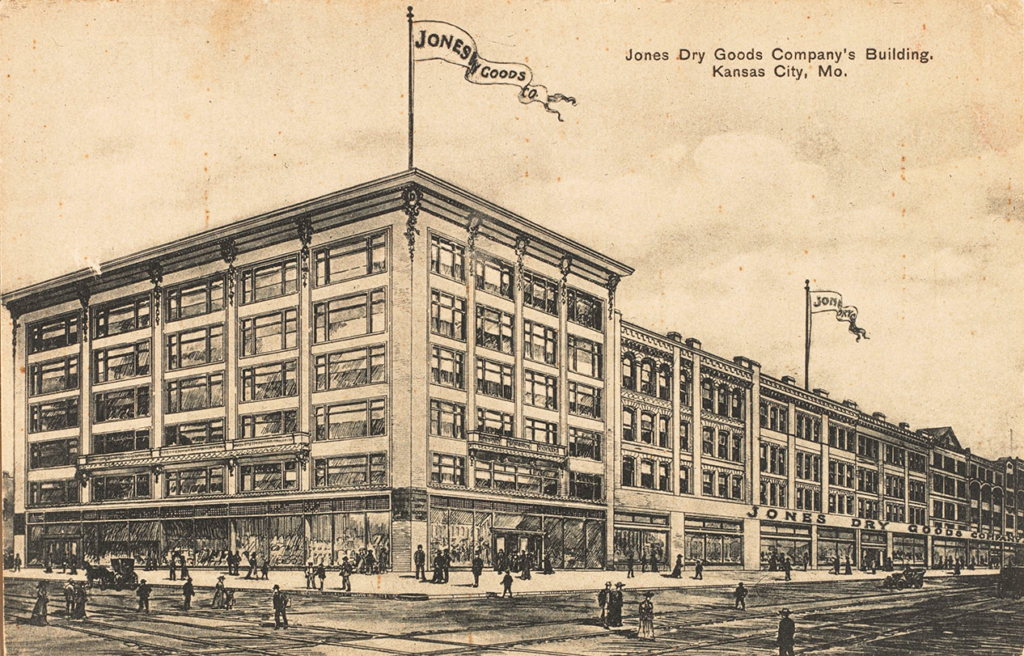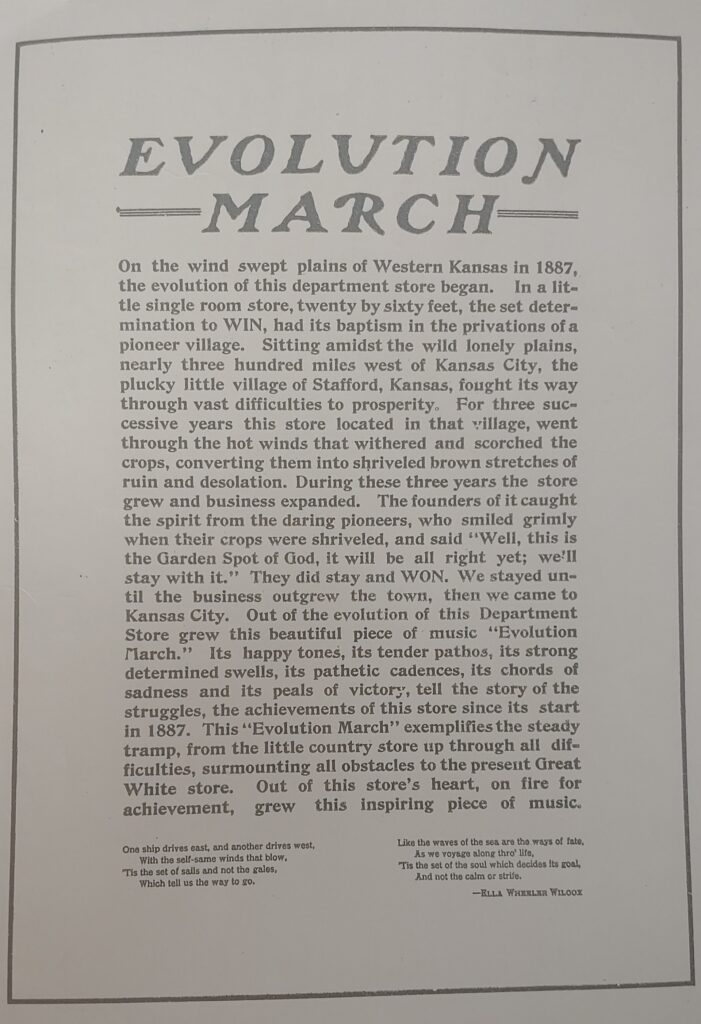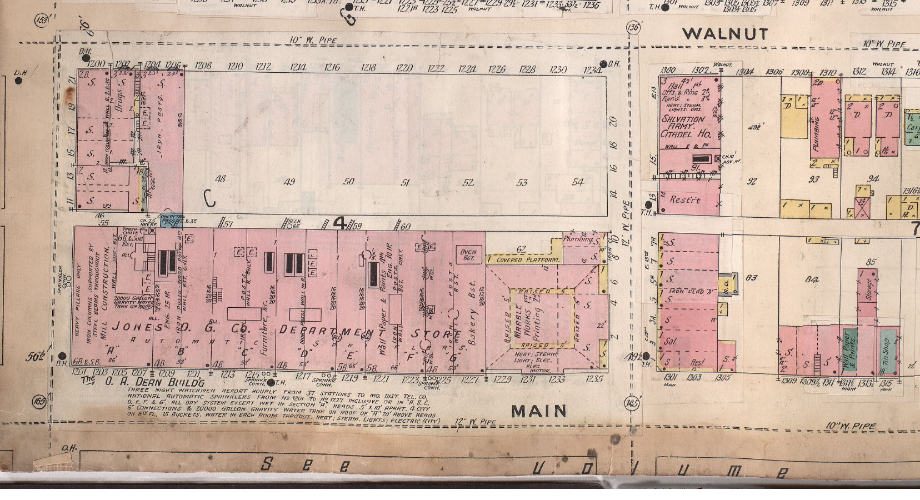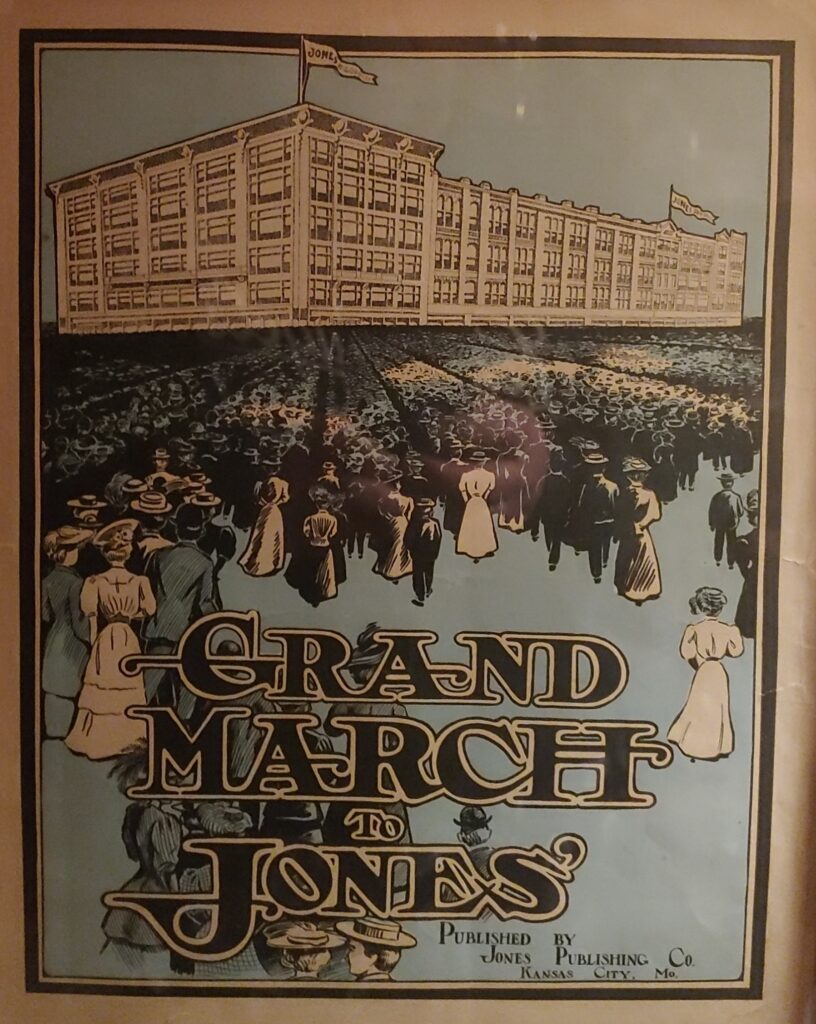
By Michael Bushnell
Not much draws people to the dusty western Kansas town of Stafford today, but J. Logan Jones and his wife opened a small dry goods store there in 1887 to serve the small agricultural community that lays about 30 miles east of Hutchinson. In 1890, Jones moved his operation to Kansas City, Kan. Almost immediately, he moved again to Sixth and Main in the thriving downtown area of Kansas City, Mo.. The store grew quickly and in 1895, Jones moved south, to the corner of 12th and Main streets in the building shown on this historic postcard.
Heralded as the “Great White Store,” the seven-story structure was constructed of white enameled brick and was for years the city’s largest department store.
Jones sold groceries, oil, coal, bedding, hardware and clothing, while offering other services such as an on-site café, art gallery, customer banking and an employee roof garden. All of this over a century before such amenities were common in today’s “superstores.”
In 1899 after a dozen years in business, Jones commissioned a march to be written in tribute to the patrons of his dry goods store. Local music composer Daisy Allen penned “The Grand March to Jones.” The piece was an instant hit with area bands and was often played where Jones and his wife were present or where they entertained. Later, Jones commissioned another piece, “The Evolution March” from Harriet Bird to celebrate the 15th anniversary of the store. On the inside cover of the published music is a brief synopsis of the history of the company, part of which reads: “This evolution march exemplifies the steady tramp, from a little country store, up and through all difficulties, surmounting all obstacles to the present great white store. Out of this store’s heart, on fire for achievement, plays this inspiring piece of music.”

Despite past success, the Jones Store collapsed into bankruptcy in the financial depression of 1910. Jones lost everything. His store, the warehouse, its once thriving mail order business and his mansion, all taken over by New York interests. In 1919 the new owners acquired the merchandise from Bernheimer Brothers, who had a store at 912 Main Street downtown.
Jones’ downtown flagship store remained in business until January 1998, long after the exodus of other major retailers such as Macy’s, Peck’s, George Taylor and Emery, Bird, Thayer. The building was demolished in 2005, replaced by retail shops as part of the Power and Light District. On September 9, 2006, the Jones Store Co. name was phased out in favor of the Macy’s brand, marking the second entry for Macy’s into Kansas City and Topeka. At one point in time during the 1970’s, there were almost a dozen Jones locations in the region that included downtown, Bannister Mall, Blue Ridge Mall, Metro North Mall, Oak Park Mall, Independence Center, Metcalf South Shopping Center, Town Center Plaza, Prairie Village Shopping Center, and West Ridge Mall in Topeka, Kan., and Westroads Mall in Omaha, Neb.

Jones re-started his business career opening the Logan Jones Dry Goods Company he operated independently of his earlier Kansas City venture until his retirement in 1939. Jones died on October 21, 1945 at the age of 86, ironically enough, on a visit back to Kansas City.
Thanks once again to the Missouri Valley Special Collections, Kansas City Public Library, Kansas City, Mo., for their contribution to this column.


















